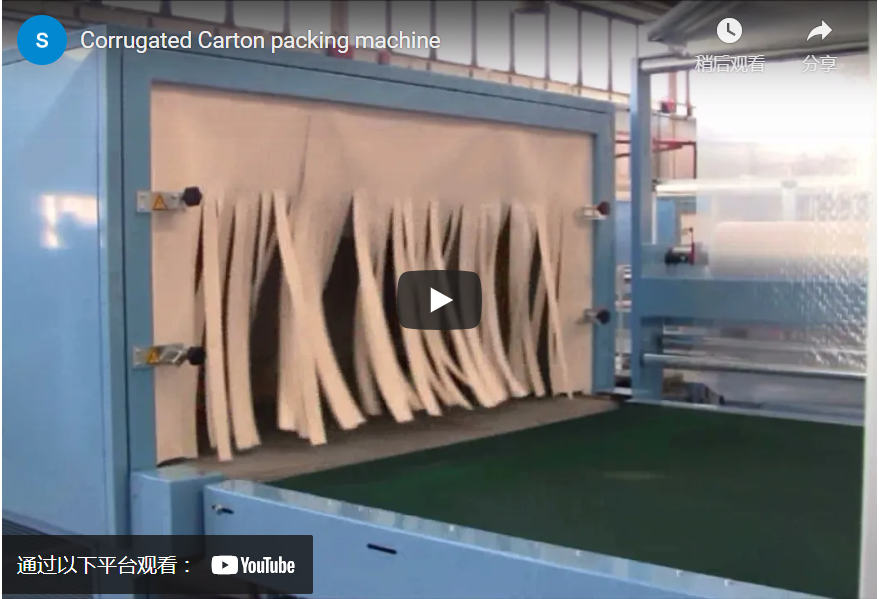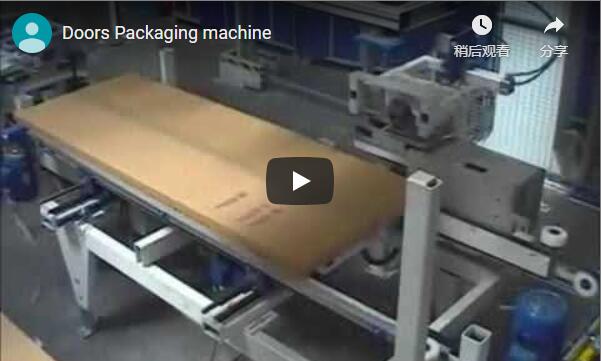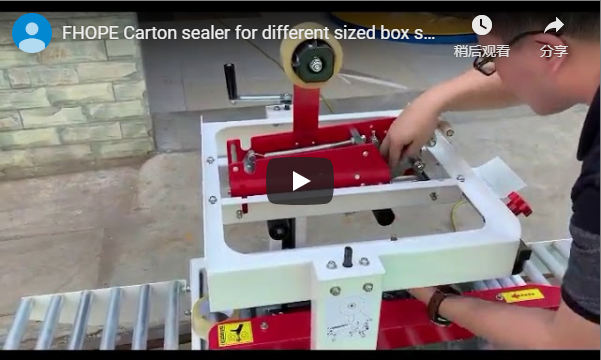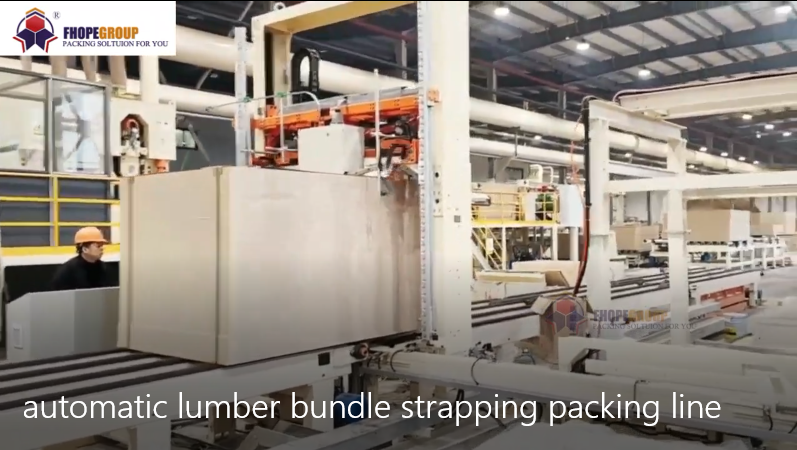In today's fast-paced logistics and manufacturing environments, optimizing packaging processes is paramount for protecting goods, reducing costs, and maintaining throughput. This overview delves into the functionality, design, and application of an automatic shrink wrapping machine specifically engineered for corrugated cartons, offering a robust solution compared to manual methods.
1. Operational Workflow: From Infeed to Output
The automated packaging cycle commences when an operator places a corrugated carton onto the infeed conveyor belt. The machine's integrated sensors detect the carton's presence, initiating the conveying process into the primary wrapping station.
- Film Dispensing: A roll of heat-shrink film, typically Polyolefin (POF) or Polyethylene (PE), is mounted on a dispenser. The machine automatically draws the required length of film.
- Carton Enclosure: Depending on the machine configuration (e.g., L-bar sealer, side sealer), the film is precisely draped and sealed around the carton. For L-bar sealers, this creates a complete bag around the product. Side sealers provide a continuous wrap suitable for varying lengths.
- Heat Application: The loosely wrapped carton then proceeds into an integrated heat tunnel. Within the tunnel, carefully controlled hot air, often circulated by blowers and directed by baffles, is applied uniformly. This causes the thermoplastic film to shrink tightly around the contours of the carton. Infrared (IR) heaters are commonly employed for efficient energy transfer.
- Cooling & Discharge: Post-shrinkage, the carton may pass through a brief cooling zone to help the film set, ensuring a durable and aesthetically pleasing seal. Finally, the securely wrapped carton exits the machine via an outfeed conveyor, ready for palletizing or direct shipment.
2. Key Design Features and Structural Components
Modern corrugated carton shrink wrappers are built for reliability and ease of use in industrial settings. Key components often include:
- Frame Construction: Robust steel frames, often powder-coated, provide stability and longevity.
- Conveyor System: Variable speed conveyors (infeed, tunnel, outfeed) ensure smooth product transition and allow synchronization with existing production lines. Belt materials are chosen for durability and heat resistance.
- Film Delivery System: Includes film roll cradles, perforation wheels (for air escape during shrinking), and tension control mechanisms for consistent film feed.
- Sealing Mechanism: Precision-controlled sealing bars (e.g., heated wire, hot knife) with adjustable temperature and pressure settings ensure strong, clean seals. Safety features prevent interference during the sealing cycle.

- Heat Tunnel: Insulated tunnel design minimizes heat loss, improving energy efficiency. Adjustable temperature controllers and airflow dampers allow fine-tuning for different film types and thicknesses.
- Control Panel (HMI): A user-friendly Human-Machine Interface (HMI), often a touchscreen, allows operators to set parameters (temperature, speed, seal time), store recipes for different carton sizes, and monitor machine status and diagnostics. PLC (Programmable Logic Controller) based controls ensure reliable automation.
- Adjustable Guides: Manually or automatically adjustable side and height guides accommodate a range of carton dimensions.
3. Technical Specifications Overview
While specifications vary significantly between models, typical parameters for an automatic carton shrink wrapper might include:
- Packaging Speed: 10 - 50+ cartons per minute (highly dependent on carton size, film type, and machine configuration).
- Maximum Carton Dimensions (L x W x H): e.g., 600mm x 500mm x 400mm
- Minimum Carton Dimensions (L x W x H): e.g., 150mm x 100mm x 50mm
- Sealing Bar Dimensions: Dictates the maximum width and height capability.
- Compatible Film Types: POF (Polyolefin), PE (Polyethylene)
- Film Thickness Range: Typically 12 - 30 microns (0.5 - 1.2 mil).
- Power Requirements: e.g., 220V/380V/480V, 3-Phase, 50/60Hz. Total power consumption depends heavily on heat tunnel size and sealing system.
- Compressed Air: Often required for pneumatic actuators (e.g., 6 bar / 90 PSI).
4. Comparing Manual vs. Automated Shrink Wrapping
Transitioning from manual shrink wrapping (using heat guns and manual sealers) to an automated system offers compelling advantages:
| Feature | Manual Shrink Wrapping | Automated Shrink Wrapping |
|---|---|---|
| Speed | Slow, operator-dependent | High, consistent throughput |
| Consistency | Variable seal/shrink quality | Uniform, repeatable results |
| Labor Cost | High per unit | Significantly reduced per unit |
| Film Usage | Often higher due to waste | Optimized, potentially lower usage |
| Operator Safety | Risk of burns, repetitive strain | Reduced manual handling, guarded |
| Package Appeal | Can be inconsistent | Professional, tight, uniform wrap |
| Integration | Standalone process | Can integrate into packaging lines |
5. Material Considerations: Selecting the Right Shrink Film
The choice of shrink film impacts performance and cost:
- Polyolefin (POF): Excellent clarity, high tensile strength, good puncture resistance. FDA-compliant for food contact. Ideal for retail packaging where appearance is critical. Generally requires higher tunnel temperatures than PVC.
- Polyethylene (PE): More durable and typically lower cost than POF. Often used for bundling heavier items or transit packaging where clarity is less critical. Available in low-density (LDPE) and linear low-density (LLDPE) formulations. Requires specific temperature settings for optimal shrinkage.
Film gauge (thickness) selection balances protection requirements against material cost.
6. Integration and User Experience
Integrating an automatic shrink wrapper involves considering line layout, conveyor speeds, and upstream/downstream equipment. Modern machines prioritize ease of use:
- Setup & Changeover: HMIs often store parameters (recipes) for different carton sizes, facilitating quicker changeovers. Tool-less adjustments for guides and film rolls are increasingly common.
- Maintenance: Designs often feature accessible components for routine cleaning and maintenance (e.g., sealing bar cleaning, checking heater elements). Diagnostic screens on the HMI can assist troubleshooting.
- Operator Training: Intuitive controls reduce the learning curve, though proper training on safety procedures, film loading, and basic parameter adjustments remains essential.
This automatic packing machine offers a significant upgrade over manual methods, delivering efficiency, consistency, and enhanced product protection for corrugated cartons. By automating the shrink wrapping process, businesses can reduce labor costs, minimize material waste, and improve overall packaging line productivity, ensuring products arrive at their destination securely and professionally packaged. For further information on packaging standards and materials, resources like the PMMI (The Association for Packaging and Processing Technologies) can provide valuable industry insights.



